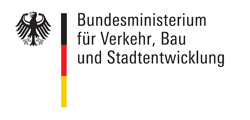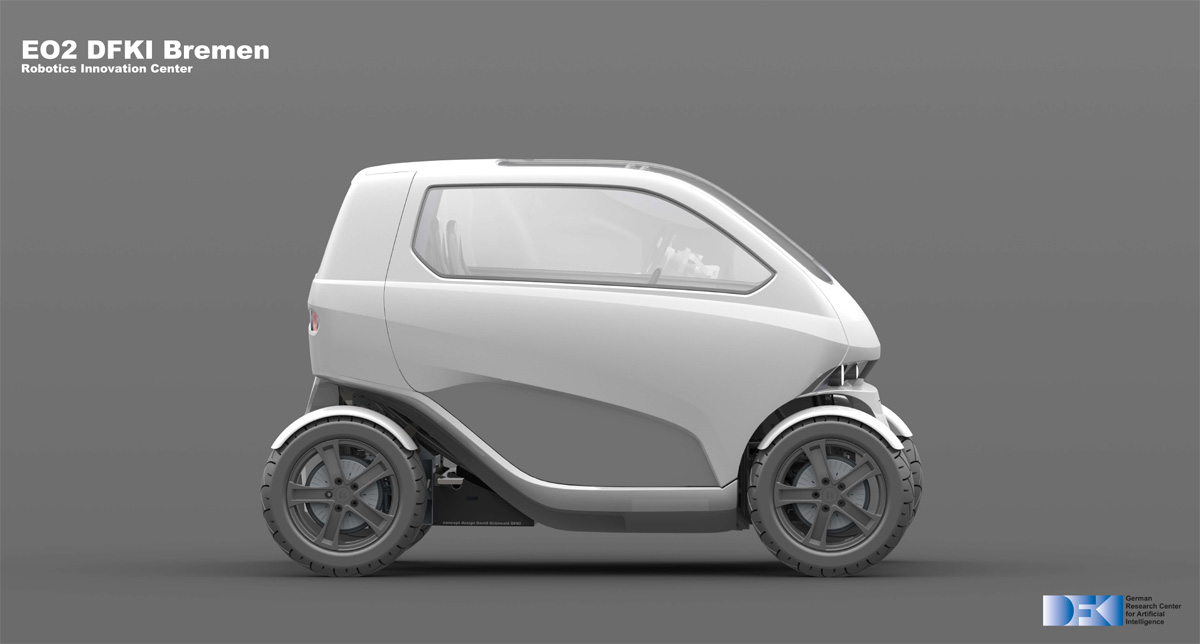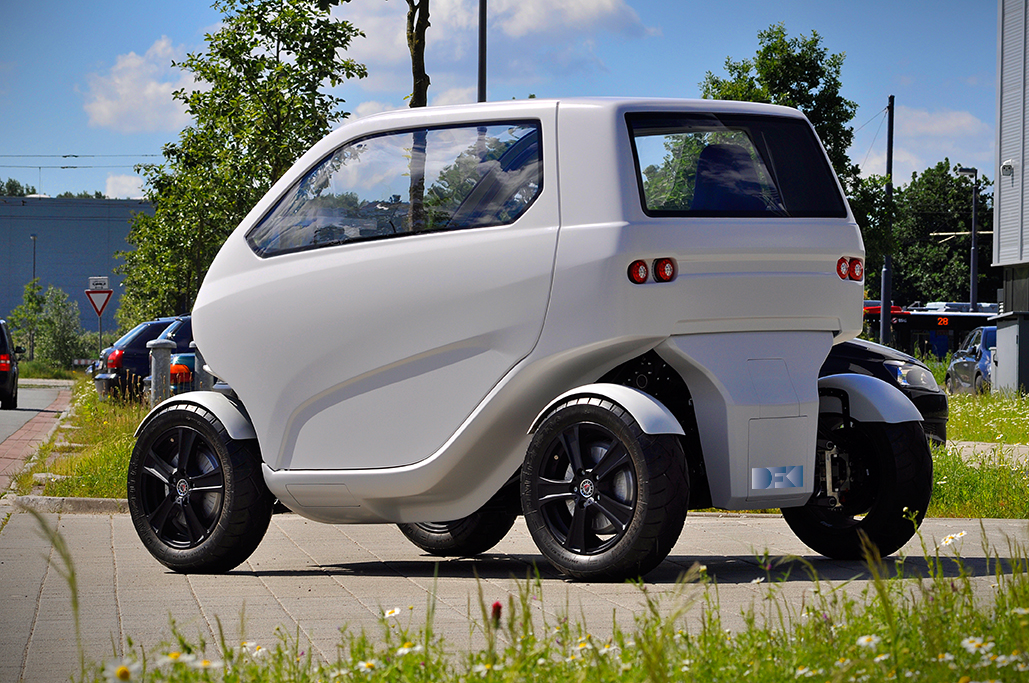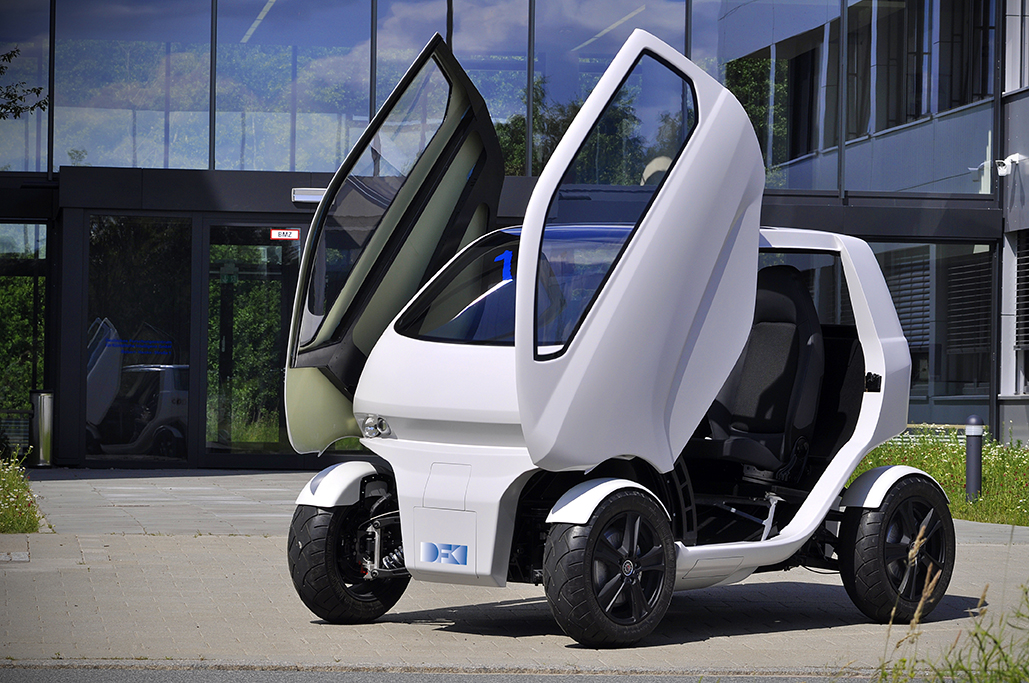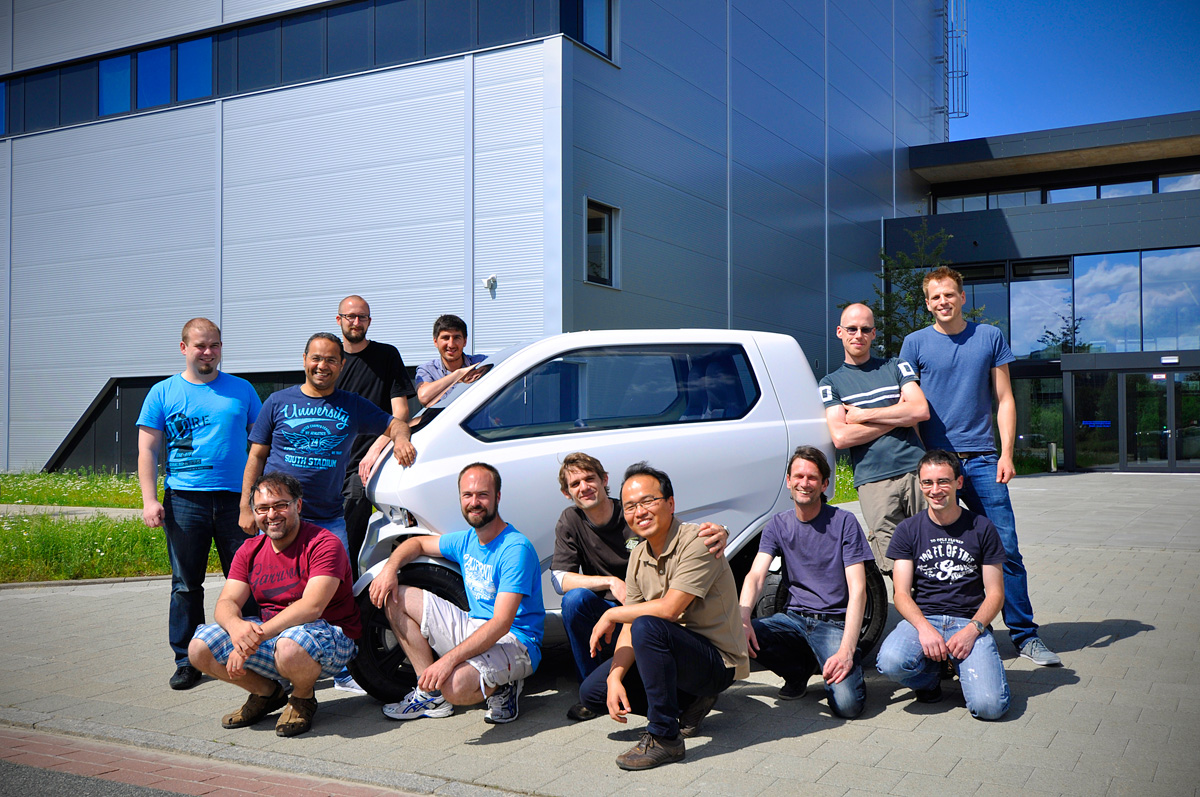EO smart connecting car 2
Highly flexible and modular robotic car and trailer as modular platform
Technical Details
| Size: | 2.58 m x 1.57 m x 1.6 m; Or rather 1.81 m x 1.57 m x 2.25 m (The indication of the length of the vehicle depends on the type of tire / tyre section. The values have been recorded with tires of type 200/60 R 16 79V.) |
| Weight: | 750 kg |
| Power supply: |
54V – LiFePo4 battery
|
| Speed: | 65 km/h (40 mph) |
| Actuation/ Engine: |
4 x 4kW wheelhub motors; 10 x longstroke-Lineardrive with 5000N 1 x Folding Servo
|
| Sensors: |
Hall-effect as well as string potentiometer sensors for angle and length measurement
Stereo-Kameras at the front and at the back
32-Line Lidar for 3D-scans of the environment
6 ToF 3D cameras for near field overview
|
| Communication: |
CAN-Bus RS232 RS485 LAN
|
Organisational Details |
|
| Partner: |
H²O e-mobile GmbH, Fraunhofer IFAM |
| Sponsor: | Federal Ministry of Transport, Building and Urban Development |
| Grant number: | 03ME0400G |
| Application Field: | Electric Mobility |
| Related Projects: |
SADA
Smart Adaptive Data Aggregation
(02.2015- 04.2018)
Dreams4Cars
Dream-like simulation abilities for automated cars
(01.2017- 12.2019)
CERMcity
Center for European Research on Mobility Urban Validation Environment
(10.2016- 09.2019)
|
| Related Robots: |
EO smart connecting car
EO smart connecting car further development in subprojekt ITEM
|
| Related Software: |
MARS
Machina Arte Robotum Simulans
Phobos
An add-on for Blender allowing editing and exporting of robots for the MARS simulation
Rock
Robot Construction Kit
|
System description
EOscc2 - An ultra flexible micro-car for mega-cities
More and more people are drawn into the big cities of the world. Consequently, all of these cities have one challenge to face: Not enough parking space and very congested traffic, especially during rushhours. This becomes even more problematic when big cars are just used by single individuals.
Therefore, small, comfortable and safe cars are required and, in addition to that, the electric drive train provides possibilities to completely rethink what we know about individual transportation.
EO smart connecting car 2 is the result of consequent and ongoing research, development, and optimization of the EO smart connecting car concept.
Like its predecessor, it features
- normal driving
- driving diagonal
- turning on the spot
- even driving sideways
- and shrinking from ca. 2.6 m down to ca. 1.8 m
- while maintaining a comfortable seating position.
Big windows guarantee a good perception of the surrounding environment while an intuitive user interface provides easy access to all drive modes the robotic car has to offer.
Moreover, the car’s computer and its auto-navigation system provides extensive driver assistance functions. Autonomous parking, even within narrow and congested roads, is possible. Later, an autopilot will be able to drive the car without a single passenger intervention creating the driverless car.
Designing a possible future of mobility
A team of nine engineers and a designer as well as several students created the robotic car between Oct. 2011 and Jul. 2014. To prove the feasibility of the technical requirements an integration study as well as a detailed physics simulation model was built. Both utilized the final axial modules and most of the final electronic components but was controlled by a “Rapid Control Prototyping” system.
After successful testing a chassis was constructed and built. At the same time, software development was underway for highly integrated, dedicated, and custom built vehicle control units.
One problematic aspect of electric vehicles is the charging cable. To face this issue, a versatile, foldable docking interface was constructed that fits into the body of the car and also allows for connecting extension modules, like range extenders, passenger modules, or cargo modules.
Videos
SADA: Smart Adaptive Data Aggregation Szenario 1

The aim of the SADA joint project is to intelligently and flexibly link the data collected by the on-board sensors of an (electric) vehicle with the data of an unknown stationary infrastructure, regardless of manufacturer or application area. This enables the dynamic integration and evaluation of data from disparate and uncoordinated sensors. In the future, this should, for example, support comfort functions while driving, improve driving safety and protect the environment by avoiding traffic jams and parking lot search traffic.
SADA: Smart Adaptive Data Aggregation Szenario 2

The aim of the SADA joint project is to intelligently and flexibly link the data collected by the on-board sensors of an (electric) vehicle with the data of an unknown stationary infrastructure, regardless of manufacturer or application area. This enables the dynamic integration and evaluation of data from disparate and uncoordinated sensors. In the future, this should, for example, support comfort functions while driving, improve driving safety and protect the environment by avoiding traffic jams and parking lot search traffic.
EO smart connecting car 2: Overview

EO smart connecting car: Demonstrator-Video (Video: Timo Birnschein, DFKI GmbH)
EO smart connecting car: Social mobility

Smart connecting cars and social mobility
EO smart connecting car: multipurpose extension module

The video presents the multi-purpose expansion unit for the robotic electric vehicle EO smart connecting car 2. With this vehicle, the researchers are pursuing a modular concept that allows for different modules to connect with each other, e.g. vehicle with vehicle or vehicle with trailer. Due to the new expansion unit - capable of acting as a trailer among others - the scientists have now been able to demonstrate the modularity of the EO smart connecting car 2 for the first time.

